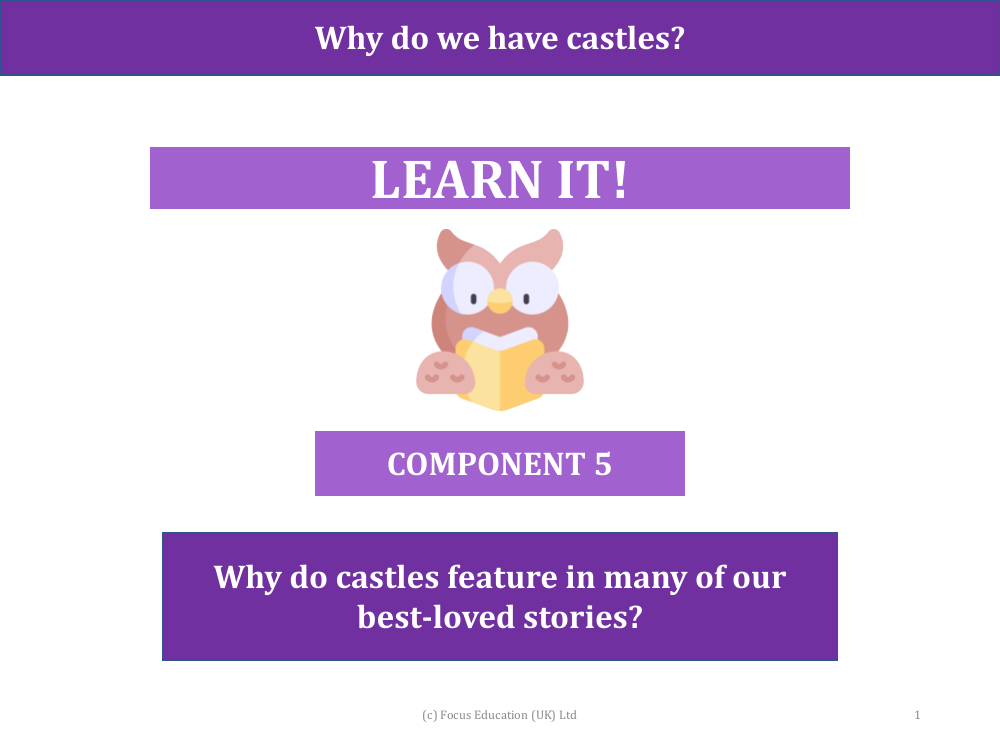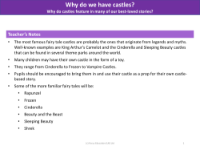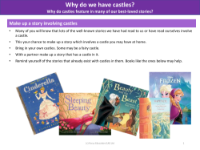Why do castles feature in many of our best loved stories? - Presentation

History Resource Description
Castles have long captured our imaginations, often appearing as grand, mystical settings in many beloved tales. These structures are deeply rooted in legends and myths, with some of the most famous fairy tale castles being King Arthur's Camelot and those associated with characters like Cinderella and Sleeping Beauty. These iconic castles have transcended their storybook origins and have even been recreated in theme parks worldwide, becoming tangible experiences for fans of all ages. The fascination with castles is also evident in children's playtime, with many owning toy castles that range from themes such as Cinderella to Frozen and even Vampire Castles. Teachers encourage pupils to use these toys as a creative tool, bringing them into the classroom to serve as props for crafting their own castle-based narratives.
When it comes to stirring the creative juices, children are invited to reflect on the numerous well-known stories that involve castles, which they have either listened to or read themselves. This presents an opportunity for them to invent their own tales featuring a castle, perhaps one they own. By partnering up, they can collaborate on new stories that incorporate these majestic buildings, drawing inspiration from existing literature. Classic stories that feature castles and may ignite the imagination include "Rapunzel," "Frozen," "Cinderella," "Beauty and the Beast," "Sleeping Beauty," and "Shrek." These tales serve as a foundation for children to build upon, encouraging them to delve into the enchanting world of castles and create their own magical adventures.


